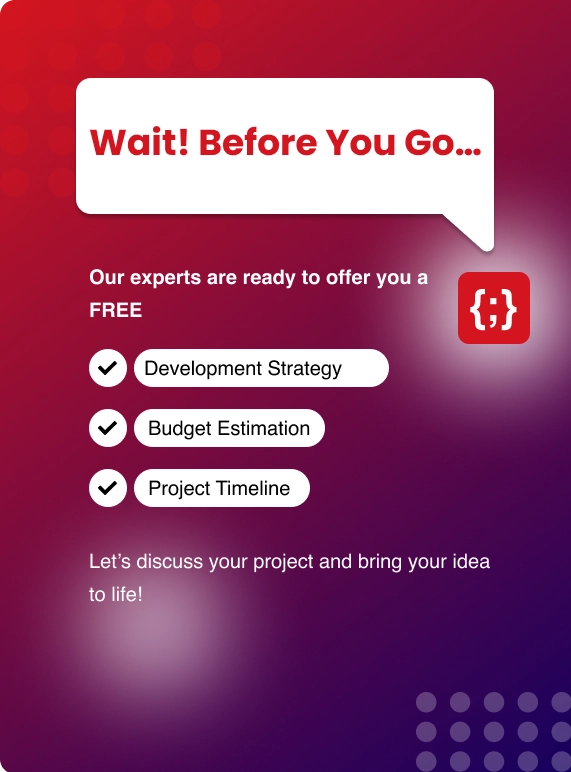Messaging apps have evolved into far more than mere tools—they are the fabric that binds families, empowers communities, and drives business efficiencies.
Arattai, Zoho’s Made-in-India messaging platform, rose from relative obscurity to over millions of active users within just days in 2025, signaling a shift in how people value speed, privacy, and accessibility in digital conversations.
If you are considering developing an app like Arattai, it’s critical to understand the full scope—what features set it apart, the technology that powers it, development timelines, and trusted cost estimates.
This insight is particularly valuable if you’re partnering with a App development company to innovate superior communication tools enriched with AI capabilities.
Arattai balances privacy, performance, and usability in a competitive market. It serves users across device types and network conditions, especially focusing on inclusivity through low-bandwidth optimizations.
Being clear about what it takes to deliver such an app helps you avoid common pitfalls, budget accurately, and plan for scalable success.
This guide unpacks every essential detail to empower you to build a communication app that meets today’s user expectations with an eye toward future innovation.
Key Takeaways (Facts that Matter)
- Building an app like Arattai costs between $75,000 to $250,000 depending on its features and complexity.
- Core messaging features cost $75K–$120K for a basic version.
- Adding voice/video calls and advanced security moves costs to $120K–$180K.
- Fully scaled apps with multi-device support and backups can reach $180K–$250K.
- Typical development time ranges 4 to 8 months.
- Arattai runs on popular, proven tech to optimize for low bandwidth and secure communication.
- The app supports huge groups (up to 1,000 members) and large file sharing (up to 2GB).
What Is Arattai?
The app promises secure, fast, and reliable messaging even on low-end smartphones and unstable networks, a huge advantage in emerging markets.
The app features simple text messaging, group chats, file sharing, voice notes, high-quality voice and video calls (all with increasing layers of encryption), and multi-device support (including desktop and Android TV apps).
Arattai places a heavy emphasis on privacy, promising no data selling or hidden monetization—a bold stance that resonates with privacy-conscious users in India.
This app is not just another chat tool. It's an inbound solution for digital inclusion and a business opportunity for developers who understand emerging market needs. Building an app like Arattai means embracing lightweight UX, scalablility, and privacy technologies. These factors directly influence the cost and timeline.
Features Broken Down of Arattai
What exactly makes Arattai stand out in the crowded messaging app market?
Let’s break down its features one by one, showing just how much engineering—and cost—goes into each capability. If these all sound appealing, remember: delivering them to thousands or millions of users takes time, know-how, and resources.
Chatting
At its core, Arattai offers classic one-on-one chats. Users send text, emojis, stickers, and voice notes for expressive, personal communication. Robust file sharing lets users send documents, images, videos, and more—often up to 2GB per file. This involves real-time syncing across devices, automatic file compression for faster uploads, and reliable offline support for areas with intermittent connectivity. Emoji reactions and stickers add fun, requiring dedicated design and front-end implementation.
Group Chats
Group chats are supercharged, hosting up to 1,000 members with advanced admin controls. Think muting users, promoting moderators, pinning messages, and managing invite links. Moderation tools help keep conversations safe and civil. Engineering these large chats isn’t simple—coordination, message ordering, and data storage in massive rooms take powerful infrastructure and smart backend code.
Voice & Video Calls
Arattai’s encrypted calling feature rivals premium meeting apps. Users can make crystal-clear voice and video calls, including group video calls for up to 50 participants. Under the hood, this requires media servers that handle signal routing, codecs for compression, and robust handling of network fluctuations. All outbound and inbound media streams run through secure encryption, meeting strict privacy promises and requiring thorough QA work.
Meetings
A newer feature, Meetings lets users schedule, join, and host virtual meetups—much like Zoom or Google Meet. Features include easy scheduling, joining via invites, and seamless integration with the base chat system. Backend calendar integrations and time-zone handling increase coding complexity, delivering a smooth user experience for business or personal gatherings.
Multi-Device Access
Not just limited to phones—Arattai’s platform works on Android, iOS, desktop computers, and even Android TV. Multi-device sync requires clever backend engineering for session management and real-time updates, so users retain conversations and contacts no matter where they log in.
Device authentication and secure message syncing are must-haves for multi-platform support.
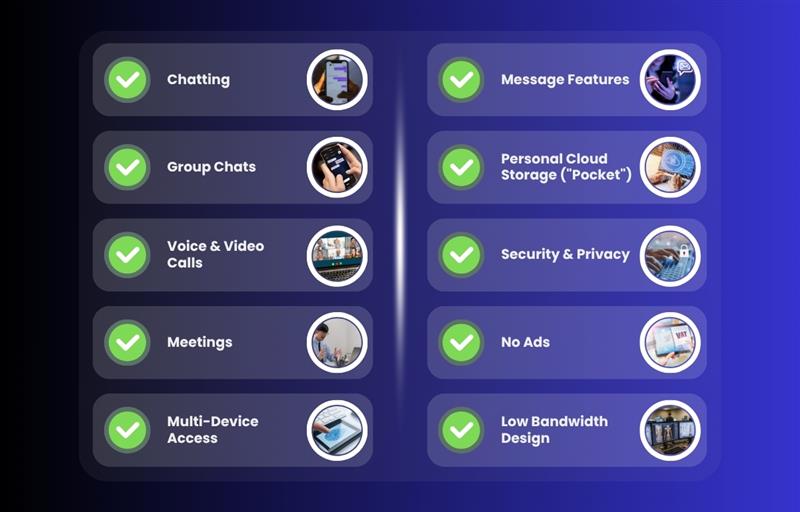.jpg)
Message Features
Advanced messaging touches like read receipts, typing indicators, message reactions, and mentions (tagging people in chats) make Arattai feel intuitive and modern.
These real-time feedback elements rely on instant notifications and data updates, handled by backend services that coordinate thousands of simultaneous message exchanges.
Personal Cloud Storage ("Pocket")
Unique to Arattai, the Pocket feature acts as encrypted personal cloud storage. Here, users save notes, images, and reminders privately, totally separate from main chats.
Everything is end-to-end encrypted for security. Building “Pocket” demands custom backend systems for secure user data siloing, storage encryption, and fast access across devices.
Security & Privacy
Arattai doesn’t compromise on security. Voice and video calls are fully end-to-end encrypted. While text message encryption is transitioning, robust privacy policies guard user data at all times.
Engineering full-fidelity encryption across media types is costly and requires deep expertise in cryptography, but it's a top requirement for user trust.
No Ads
User experience stays focused—Arattai promises no advertisements and no user data selling.
That decision means all funding must come from elsewhere, making efficient backend handling and smart scaling vital for keeping operating costs manageable.
Low Bandwidth Design
The app is optimized for rural regions and users with slow or patchy internet. Advanced network optimization code compresses messages and media files, queues delivery for low-connectivity, and conserves bandwidth.
Making an app genuinely lightweight and resilient reduces server costs, but takes upfront engineering and careful design choices.
Wondering how much it costs to build a cross-platform app with React Native?
Our detailed 2025 guide breaks down costs, timelines, and best practices so you can plan your app development smartly.
Read the BlogThe Technology Stack Simplified: Building an App Like Arattai in 2025
Building a messaging app like Arattai isn’t simply about putting chat bubbles on the screen.
It demands a finely tuned technology stack combining frontend performance, robust backend infrastructure, secure communication protocols, and scalable cloud deployment.
Here’s a detailed breakdown of the tech components making apps like Arattai responsive, secure, and reliable—even under heavy user load and complex interactions.
Frontend Development
The user interface of Arattai needs to be fast, smooth, and intuitive. To achieve this, developers typically build native apps using:
- Kotlin and Java for Android: Kotlin is the preferred modern language for Android development, providing concise code and better performance. Java still plays a role especially in legacy integrations.
- Swift for iOS: Swift offers a powerful, safe, and expressive way to build iPhone and iPad apps, ensuring smooth animations and quick response times.
Native development ensures that the app feels natural on each platform. It better leverages device hardware for voice and video calls and supports system-level features efficiently. This is why Arattai runs smoothly on both low-end and high-end smartphones, optimizing user experience regardless of device specs.
Backend Development
The backend powers the real-time communication, user management, and data processing. Popular backend technologies for such apps include:
- Node.js: Known for its event-driven architecture, Node.js excels at handling simultaneous connections and real-time data transfer, making it a top choice for messaging apps.
- Go (Golang): Go provides performance advantages in concurrency and scalability, well-suited for the demanding workloads of instant messaging.
These backend servers manage everything from authenticating users and keeping track of contacts to routing messages and syncing data across devices. They handle fault tolerance with smart workload distribution to ensure calls and chats don’t drop even under network pressure.
Databases
Messaging apps need speedy data retrieval for chat histories and user profiles, often involving billions of small, instant read-write operations. NoSQL databases like:
- MongoDB: Popular choice because it handles flexible, document-based data structures well and scales horizontally as user volume grows.
Some setups use a combination of NoSQL for chats and relational databases for transactional or administrative data, striking a balance between speed and reliability.
Caching Layer
Fast message delivery requires caching frequently accessed data to reduce database hits and cut latency. For this:
- Redis: In-memory data store known for ultra-low latency and high throughput, capable of handling real-time feed caching, session management, and message queues efficiently.
Redis significantly speeds up interactions, making sure users receive notifications and message updates almost instantaneously.
Encryption & Security Libraries
User privacy is paramount, especially with apps like Arattai gaining trust based on secure communication promises. Implementing:
- Signal Protocol-based encryption libraries: Ensures end-to-end encryption for text, voice, and video chats.
These libraries protect message content from interception with strong cryptographic keys managed only on client devices.
This approach requires expert knowledge to integrate properly without compromising performance or user experience.
Cloud Hosting & Infrastructure
Scalability and availability come from cloud platforms, which provide near-instant resource scaling as user demand spikes:
- Amazon Web Services (AWS)
- Google Cloud Platform (GCP)
Both offer automatic scaling tools, managed databases, container orchestration, and global Content Delivery Networks (CDNs), which together ensure millions of users get reliable service worldwide. Using cloud providers also eases the deployment of multi-region server clusters and robust disaster recovery setups.
Media Delivery
Messaging apps handle lots of photos, videos, and documents. To deliver media efficiently, apps rely on:
- Content Delivery Networks (CDNs): Cache media files closer to users, reducing load times and bandwidth costs.
CDNs ensure that users experience minimal delay when opening or sharing media, even if the original servers are far away or experiencing high demand.
Push Notifications
Instant alerts keep users engaged and communicating in real-time. For Android and iOS apps:
- Firebase Cloud Messaging (FCM): Widely used to send reliable push notifications when new messages arrive or calls come through.
FCM supports silent pushes and high priority notifications, helping apps like Arattai maintain responsiveness without draining device batteries.
DevOps & Continuous Integration/Deployment (CI/CD)
To release updates quickly and securely, modern development workflows rely heavily on:
- Containerization: Tools like Docker and Kubernetes enable apps to run reliably across development, testing, and production environments.
- CI/CD Pipelines: Automate code testing, integration, and deployment phases, reducing errors and downtime.
This DevOps approach guarantees that patches, new features, or security fixes reach users faster without breaking existing functionality.
Let’s break down how much it costs to create an app like Arattai.
Developing an app is a journey. Here’s what the costs look like, split by stages for building an app like Arattai:
| Stage | What Happens | Estimated Cost (USD) | Timeframe |
|---|---|---|---|
| Discovery & Planning | Research, strategy, app specification | $5,000 - $15,000 | 1 - 4 weeks |
| UI/UX Design | Wireframes, user flows, final visual design | $10,000 - $30,000 | 2 - 6 weeks |
| Core Development | Messaging, groups, file sharing, notifications | $35,000 - $75,000 | 8 - 14 weeks |
| Advanced Features | Voice/video calls, meetings, Pocket, encryption | $25,000 - $50,000 | 4 - 8 weeks |
| Quality Assurance & Testing | Bugs fixing, performance testing | $8,000 - $15,000 | 3 - 6 weeks |
| Launch & Deployment | App Store/Play Store release, backend setup | $2,000 - $5,000 | 1 - 2 weeks |
| Maintenance & Updates | Ongoing support and scaling | 20-25% of development cost annually | Ongoing |
Cost Summary:
- A basic Arattai-like app with essential chat can start around $75K and take about 4-5 months.
- Include voice/video calls and security features, and the price goes up to $150K+.
- If you want all features, big groups, and multi-device sync, expect $200K+ and 6-8 months.
How Long Does It Take?
The timeline depends on:
- How many platforms (Android, iOS, Web).
- How complex the feature set is.
- How much security and scaling you need.
Typical schedule looks like this:
- Weeks 1-4: Planning, research, and design.
- Weeks 5-18: Development of chat, messaging, notifications.
- Weeks 19-24: Advanced features like voice/video, encryption.
- Weeks 25-30: Testing, bug fixes, beta releases.
- Weeks 31-34: Final launch and backend scaling.
If you want a faster launch, start with one platform or fewer advanced features and add them later.
What Drives Costs Up or Down?
When planning to develop a messaging app like Arattai, understanding what factors push your budget up or pull it down is crucial.
Each decision you make can have a ripple effect on cost, timeline, and even future scalability. Here’s a detailed look at the key drivers that impact development costs in 2025.
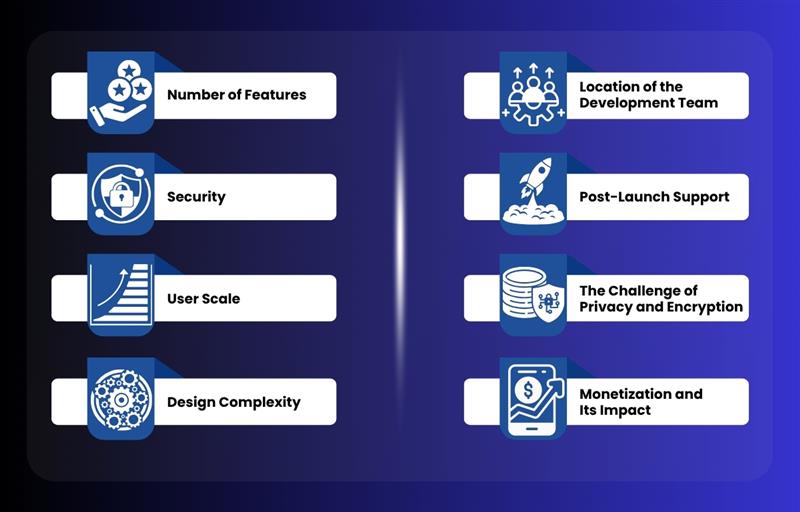
Number of Features
The complexity and quantity of features are among the biggest cost influencers. For instance, adding voice and video calls requires substantial backend infrastructure. Why? Because these features are resource-intensive—they demand real-time data transmission, low latency, and high uptime.
Large group chats amplify this challenge, asking your servers to manage hundreds or even thousands of concurrent connections continuously.
This means you’ll need a more robust backend system and expensive third-party integrations or custom-built solutions to handle media streaming. The more features you pile on, the more developer time and infrastructure you require, which drives costs steeply upward.
Security
Security often represents a substantial portion of messaging app budgets. Basic encryption like transferring data securely over HTTPS is relatively inexpensive. But full end-to-end encryption (E2EE), where only the communicating users hold the keys, requires highly specialized engineers who understand cryptographic protocols in detail.
E2EE demands more development hours to implement properly, test thoroughly, and maintain. It also influences your architecture by necessitating local key management without centralized access that could compromise privacy.
Ignoring solid security can save money upfront but risks user trust and potentially massive liabilities later. Investing in high-grade security from the start is wise but commands higher costs.
User Scale
The number of users you plan to support influences cost significantly. Targeting millions of users requires a distributed server architecture, Content Delivery Networks (CDNs) for global performance, advanced caching, and load balancing to avoid downtime.
Scaling also impacts database choices, replication strategies, and backup processes to ensure your messaging service remains fast and reliable under heavy load.
These infrastructure upgrades come with recurring operational costs that expand alongside your user base. If you’re starting small, you can reduce early costs with simple server setups and increase spending gradually as you grow.
Design Complexity
User experience defines app engagement, but custom animations, transitions, and unique UX flows take extra design and development effort. Hiring expert UX/UI designers to create intuitive, smooth interfaces can add thousands to your budget.
Complex design isn’t just about visuals — it requires building reusable components, performant animations, and ensuring accessibility across devices. While pre-built templates can reduce UI costs, they often deliver less delightful experiences and limit brand recognition.
Balancing an attractive, user-friendly design with your budget is an important early decision. Overly ambitious design ambitions can balloon costs quickly.
Location of the Development Team
Where your development team is based matters. Developers in the U.S., Canada, and Western Europe typically charge between $80 and $150 per hour. Skilled teams in Asia, Eastern Europe, and Latin America offer rates of $20 to $50 per hour for similar quality work.
Choosing offshore or nearshore teams can cut costs by up to 3x, but may introduce challenges in communication and time zone coordination. Onshore teams might cost more but provide easier collaboration and faster iterations, essential in complex projects like messaging apps.
For many companies, a blended team approach—mixing senior developers from higher-cost regions with mid-level offshore resources—strikes a healthy balance between cost control and quality assurance.
Post-Launch Support
Building your messaging app is just the beginning. After launch, continual support is vital and often overlooked in initial budgets. Expect ongoing expenses for:
- Regular updates to keep pace with new OS versions and device models.
- Prompt bug fixes addressing user-reported issues to minimize churn.
- Server maintenance, scaling infrastructure as user growth demands.
- Security patching and periodic audits against new vulnerabilities.
- Customer service and moderation to handle abuse reports or spam.
These efforts require dedicated staff or contracted partners and often amount to 15-30% of your original development costs annually. Planning for this ensures your app remains competitive and reliable long-term.
The Challenge of Privacy and Encryption
Arattai encrypts voice and video calls fully. Text encryption is planned but still rolling out. Developing robust encryption is technically challenging and raises costs by 20-30%. But privacy is what today's users want. Skipping encryption risks losing users before you launch.
Monetization and Its Impact
If you plan to monetize:
- Ads add design, UI work, and require privacy scrutiny.
- Premium accounts or storage need subscription logic.
- Enterprise features mean admin portals and service support.
Plan carefully to avoid scope creep and keep the launch timeline on track.
How Zenesys Solutions Inc Can Help in Building Your Messaging App Like Arattai
When it comes to developing a complex, feature-rich, and scalable messaging app like Arattai, partnering with an experienced and technology-driven company makes all the difference.
Zenesys Solutions Inc offers the expertise, technology know-how, and agile development processes needed to bring your vision to life—seamlessly and efficiently.
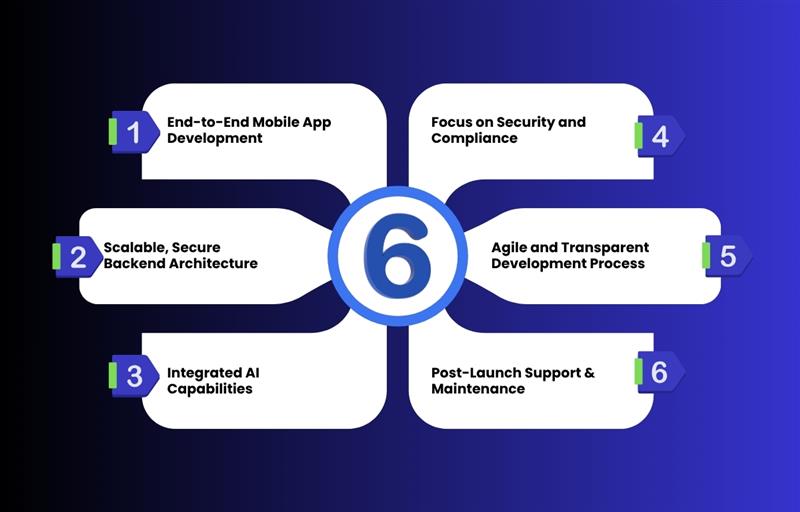
End-to-End Mobile App Development
Zenesys specializes in custom mobile app development services tailored to your unique business goals. Whether you require native Android or iOS development in Kotlin, Swift, or cross-platform solutions like Flutter and React Native, Zenesys has skilled developers who ensure your app performs flawlessly across devices. Their team focuses on creating intuitive, user-friendly interfaces designed to offer smooth and engaging experiences just like Arattai.
Scalable, Secure Backend Architecture
A messaging app depends heavily on a robust backend architecture. Zenesys engineers build scalable, secure server-side systems using the latest technologies such as Node.js and Go. They implement real-time communication protocols, efficient databases like MongoDB, caching with Redis, and cloud hosting setups on AWS or Google Cloud to accommodate millions of users and ensure fast, reliable messaging and calling features.
Integrated AI Capabilities
With the rise of artificial intelligence, Zenesys leverages AI integration to add intelligence and automation to your app. From AI-driven chatbots and predictive typing to spam detection and enhanced user engagement analytics, the company uses generative AI and machine learning to give your app a competitive edge.
Focus on Security and Compliance
Security is paramount in communication apps. Zenesys incorporates end-to-end encryption based on proven protocols like Signal, along with ongoing security audits and compliance adherence to industry standards. This ensures your users’ messages, calls, and shared content remain private, fostering trust and loyalty.
Agile and Transparent Development Process
Zenesys follows a highly collaborative and transparent development approach. From detailed requirement analysis, strategic planning, UI/UX designing to development, rigorous testing, and smooth deployment, every phase is handled meticulously. They use continuous integration and deployment (CI/CD) pipelines and containerization technologies to speed up releases with minimal downtime.
Post-Launch Support & Maintenance
Launching your app is just the beginning. Zenesys provides ongoing support, including timely updates, bug fixes, feature enhancements, and infrastructure scaling. Their dedicated teams monitor performance and user feedback to keep your app relevant and competitive.
Why Choose Zenesys Solutions Inc?
- Over a decade of experience with 200+ skilled developers.
- Proven track record with 150+ successful projects.
- Expertise in mobile, web, AI, cloud, and blockchain technologies.
- Focus on delivering secure, scalable, and future-ready applications.
- Transparent communication and client-centric project management.
By partnering with Zenesys Solutions Inc, you gain a trusted technology ally ready to build an app like Arattai that not only meets today’s market demands but is also positioned to evolve and scale in the future. Their blend of advanced technology, skilled workforce, and client-focused methodology makes them an ideal choice to turn your communication app project into a resounding success.
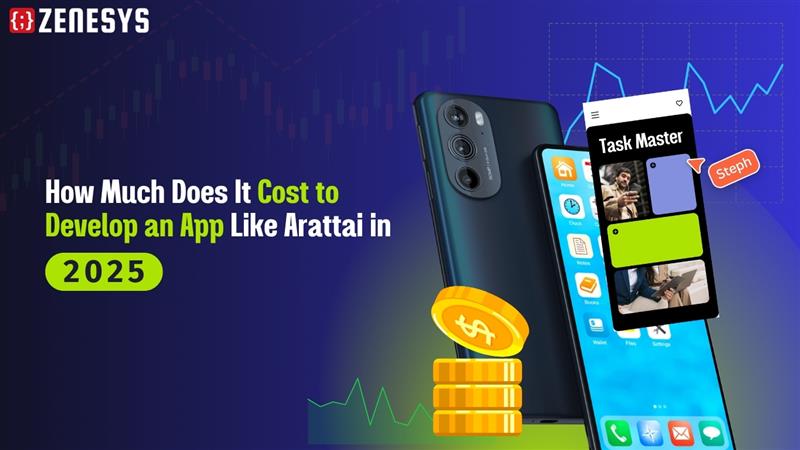

.webp?lang=en-US&ext=.webp)

.webp?lang=en-US&ext=.webp)

